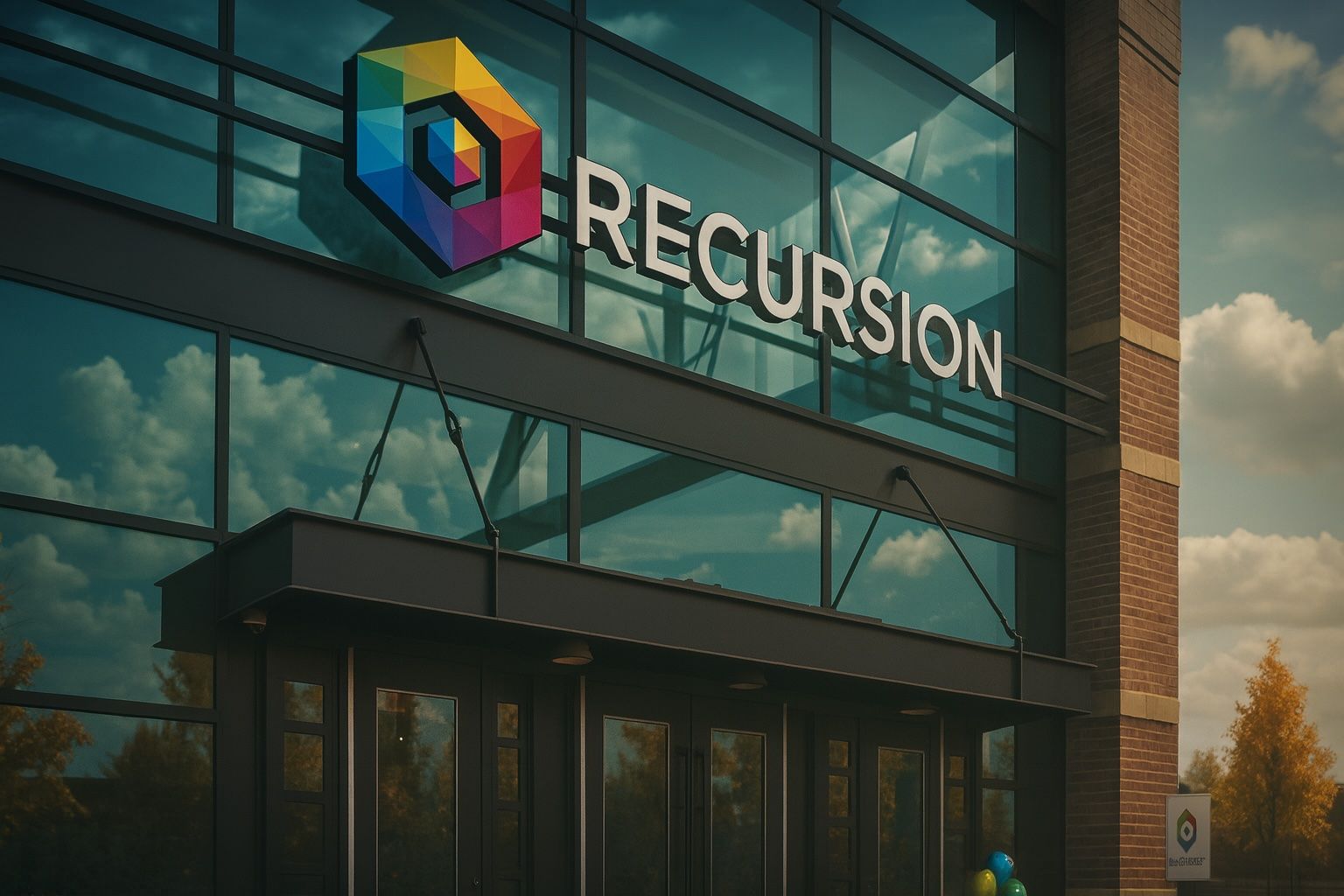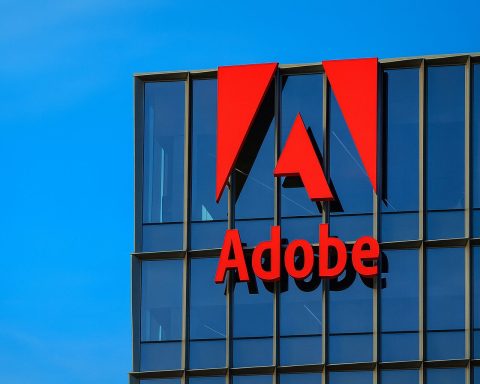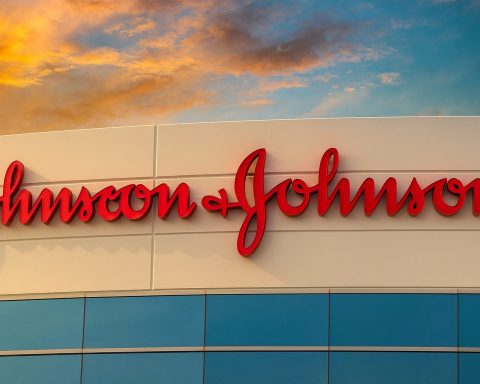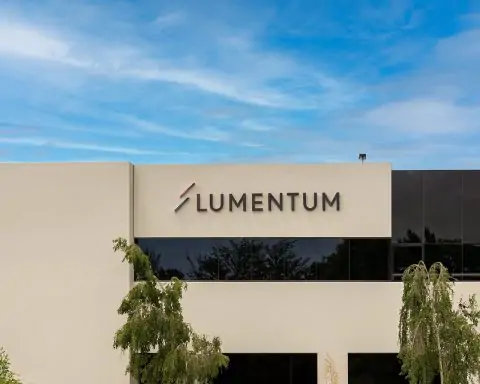- Stock surges on AI buzz: Recursion Pharmaceuticals’ stock jumped roughly 16% on October 8, 2025 to around $6.08 [1], rebounding sharply after a dip the day prior.
- Volatile week of trading: Shares fell over 5% on October 7 to $5.23 [2], then soared back above $6 on renewed investor enthusiasm. The stock hovers mid-range of its 52-week span ($3.97–$10.87) [3] [4].
- AI-driven drug hunter: Recursion is a clinical-stage biotech using artificial intelligence (AI) and automation (the “Recursion OS” platform) to speed up drug discovery [5] [6]. A recent example: Recursion claims its AI platform moved a cancer drug candidate from idea to clinical trial in just 18 months vs ~42 months industry average [7].
- Financials show growth and burn: Q2 2025 revenue hit $19.2 million (up 33% YoY) beating estimates [8], aided by $7 million from a Sanofi partnership [9]. Net loss was large at $171.9 million and R&D costs ballooned +74% [10] [11]. With ~$534 million cash on hand, Recursion has runway into late 2027 after cost cuts [12] [13].
- Big partnerships & pipeline reset: The company inked alliances with Bayer, Roche/Genentech, and Takeda [14], and acquired UK AI-drug startup Exscientia for ~$630M in late 2024 [15] to build a “powerhouse pipeline” [16]. In mid-2025 Recursion pruned 4 programs (including two Phase II trials) to focus on cancer and rare diseases [17] [18], even as it licensed a new rare bone disorder drug (REV-102 for hypophosphatasia) to bolster its portfolio [19].
Introduction: A New Kind of Biotech
Recursion Pharmaceuticals, Inc. (NASDAQ: RXRX) is redefining drug discovery by combining cutting-edge biology and data science. Based in Salt Lake City, this “TechBio” pioneer uses automation, massive datasets and machine learning to identify new therapies faster than traditional labs [20] [21]. Its mission – “to decode biology to radically improve lives” – has attracted major industry partners and bold investors. But as an early-stage biotech with no approved drugs, Recursion’s stock can be a rollercoaster ride, swayed by scientific milestones and market sentiment alike.
In early October 2025, Recursion’s stock made headlines after a sudden surge in price, underscoring both the promise and volatility of this AI-driven drug hunter. Below, we break down Recursion’s recent stock performance, the latest news fueling investor chatter, expert analyses on its prospects, and how it stacks up in the burgeoning AI drug discovery field. We also examine Recursion’s financial health, business model, and what the future might hold for this ambitious biotech.
Stock Performance in Early October 2025
After languishing through late summer, Recursion’s share price sprang to life in the first week of October 2025. On October 7, RXRX closed around $5.23, down 5.4% amid a broader market dip [22]. Just a day later, however, the stock whipsawed upward, jumping over 16% to roughly $6.08 per share [23]. By late morning on Oct 8, it even touched $6.13 (+17% intraday) [24].
This spike put Recursion near the middle of its volatile 52-week range ($3.97 to $10.87) [25]. The stock had earlier hit double-digits when AI hype in biotech peaked, then slid to the high-$3s during industry selloffs. Year to date, shares remained down roughly 30% from a year ago [26], reflecting broader biotech weakness. But the early October rebound suggests traders see trading opportunities in Recursion’s volatility, especially as interest in AI-driven stocks reignites.
What drove the Oct 8 bounce? No specific company news dropped that day, but market chatter points to a few factors. First, Recursion had been highlighted in some bullish analyses as a potential “AI biotech” play, which may have fueled retail interest. (On Oct 8, Yahoo Finance even ran a “Bull Case Theory” piece on RXRX, underscoring optimistic views.) Additionally, momentum algorithms likely picked up Recursion’s oversold technicals – its RSI had fallen into the high-20s by late August, a buy signal [27] – and the subsequent uptick snowballed. Broader sentiment also improved: that week saw a rally in biotech and AI-related stocks, suggesting Recursion’s surge was part of a sector bounce.
In short, Recursion’s stock showed its trademark volatility – a steep drop followed by a sharp rally within 48 hours. For existing shareholders, it was a reminder to buckle up; for traders, it was an attractive swing trade. This kind of volatility is not unusual for a pre-revenue biotech, especially one at the intersection of two hot themes (biotech and AI). Next, we’ll look at the news and fundamentals behind the moves.
Recent News and Catalysts
Despite the dramatic price action, official news from Recursion was sparse in early October 2025 – the surge seemed fueled more by sentiment than by any single announcement. However, a number of recent developments in the days and weeks prior have shaped the stock’s narrative:
- Zacks/Nasdaq Alert (Oct 7): On October 7, a Nasdaq newswire (via Zacks) noted “Recursion Pharmaceuticals (RXRX) dips more than broader market”, pointing out the stock’s 5.4% drop to $5.23 that day [28]. It framed this in context of upcoming earnings and a Zacks Rank #4 (Sell) on the stock [29]. This likely contributed to caution on Oct 7. (Notably, consensus expected Recursion to report a Q3 loss of ~$0.35/share and ~$17.5M revenue in its next earnings [30] – numbers in line with its heavy R&D spend and reliance on collaboration income.)
- Bullish Commentary (Oct 8): By Oct 8, the tone shifted. A Yahoo Finance “Bull Case Theory” article by analyst Ricardo Pillai outlined the bull thesis on Recursion, which may have emboldened buyers. While the full text wasn’t widely available publicly, it presumably highlighted Recursion’s unique AI platform and partnership wins as reasons the stock could be undervalued. Around the same time, Recursion’s ticker appeared on some momentum stock screens (one Zacks/Yahoo list of top momentum stocks for Oct 8 mentioned RXRX). This positive buzz created a FOMO effect – investors didn’t want to miss out on a potential turnaround story.
- Broader AI News: It’s worth noting that October 2025 saw continued enthusiasm for AI breakthroughs. Reuters reported that AI-driven drug discovery is gaining steam as the FDA encourages alternatives to animal testing [31] [32]. Recursion was cited alongside others like Schrodinger as leading this trend. Such media coverage reinforces Recursion’s identity as an AI/biotech hybrid, linking it to the sizzling AI theme. On Oct 8, multiple news outlets were discussing AI advances (from Anthropic’s latest model to regulatory shifts) – Recursion may have been lifted by the broader AI tide.
- No New Company Disclosures: Recursion itself did not issue press releases in early October. The company’s next major scheduled event was its Q3 2025 earnings (expected in early November). However, Recursion’s media presence earlier in 2025 set the stage for current investor expectations. In September, for instance, Recursion made news by open-sourcing a powerful AI model (Boltz-2) with MIT to predict drug binding affinities [33] [34]. And back in June, it had announced restructuring moves (more on those below) that extended its cash runway. These actions painted a picture of a company doubling down on AI innovation while tightening its belt – a narrative that bulls seized upon.
In summary, recent sentiment drivers for Recursion’s stock include a mix of positive analysis coverage, momentum trading, and alignment with the hot AI theme, rather than any single new corporate development. Investors are essentially positioning ahead of what they hope will be future breakthroughs or partnerships. Of course, such optimism is tempered by the company’s current financial reality and long road to drug approvals – which we examine next.
Financials: High Growth Meets High Burn
Recursion’s financial situation exemplifies the “high-risk, high-reward” nature of biotech startups. The company is not yet profitable – in fact, it’s losing a significant amount of money as it invests in R&D – but it is showing rapid revenue growth from partnerships. Let’s unpack the latest numbers:
Second Quarter 2025 Results: Recursion reported Q2 2025 earnings on August 5, delivering mixed news [35]:
- Revenue: $19.2 million for Q2, up 33% year-over-year [36]. Importantly, this beat analyst expectations (which were ~$15.4 M) by ~25% [37]. Crucially, this revenue isn’t from product sales (Recursion has no marketed drugs yet), but from collaboration payments. In Q2, for example, $7 million came from Sanofi as a milestone payment [38]. This highlights Recursion’s model of partnering its discoveries with larger pharma companies for milestone and royalty income.
- Earnings: The company had a net loss of $171.9 million in Q2, translating to –$0.41 EPS [39]. This was slightly worse than the year-ago Q2 loss of $0.40 per share. The loss was in line with expectations (analysts predicted –$0.35, but different accounting of certain expenses may explain the gap). The widening loss reflects much higher operating expenses.
- R&D and Expenses: Research & Development costs in Q2 were a hefty $128.6 million, up 74% from a year prior [40]. This surge was partly due to integrating Exscientia (the AI drug discovery firm Recursion acquired in late 2024) and increased investment in the platform and pipeline [41]. General & Administrative expenses also jumped ~47% to $46.7 M [42], as the company’s scale grew post-merger. In short, Recursion significantly ramped up spending to expand its capabilities – a strategy that boosted its capacity, but at the cost of deepening losses.
- Cash Balance & Runway: On June 30, 2025, Recursion held $533.8 million in cash, cash equivalents, and restricted cash [43]. Crucially, after some strategic changes (detailed in the next section), management stated this cash should fund operations through Q4 2027 [44]. They forecast full-year 2025 cash burn under $450 million (excluding any new partnership inflows) [45], and under $390 M in 2026 [46]. These projections came after cost-cutting measures were put in place mid-year.
The bottom line: Recursion is in solid financial shape for now, with over half a billion in the bank, but its current model requires spending enormous sums on R&D relative to incoming revenue. The company is essentially subsidizing its drug discovery engine with partnership deals and investor capital. This is normal for a pre-commercial biotech – years of losses are expected before any drug approval and sales.
It’s encouraging that Recursion beat on revenue and has a multi-year cash runway (not all peers can say the same). The partnership strategy is yielding real dollars – e.g. milestone payments from deals with Bayer, Roche/Genentech, and Sanofi have contributed to the ~$19 M quarterly revenue [47] [48]. However, the cash burn remains a key concern. As one biotech analyst, Mani Foroohar of Leerink Partners, noted after Recursion’s recent restructuring: “cash burn will remain the focus for this stock, with meaningful clinical data [not due until] 2026 and beyond” [49]. In other words, investors know Recursion must carefully manage its spending over the next couple of years, since any significant drug trial results that could change the game are still a ways out.
Positively, Recursion’s management has shown willingness to tighten belts. In June 2025, they announced a 20% reduction in workforce to curb expenses (more on that in the next section), signaling to investors that they understand the importance of preserving cash [50] [51]. Thanks to these cuts, plus a $28 M one-time tax credit and use of an ATM (at-the-market stock offering) program, Recursion actually extended its runway by a couple years [52] [53].
To sum up, Recursion’s finances reflect a classic biotech balance: growing top-line via collaborations and a strong cash reserve, offset by heavy losses and burn rate as it invests in future drugs. The company’s challenge is to keep hitting partnership milestones (to bring in cash) and possibly secure new deals or non-dilutive funding to bridge the gap until one of its pipeline candidates proves itself in the clinic.
Business Model: AI + Big Pharma Partnerships
Recursion’s approach to business is what sets it apart from many traditional biotechs. Rather than focusing narrowly on one or two drugs, Recursion has built a platform – the “Recursion Operating System” – that industrializes discovery. Here’s how the model works and the strategic moves Recursion has made:
- Recursion OS Platform: At its core, Recursion operates a full-stack AI and automation platform for drug discovery [54]. In practical terms, they run high-throughput biological experiments in-house (“wet lab” automation) and use machine learning on the resulting massive image and omics datasets to find patterns – for instance, identifying which molecules might treat which diseases. This platform, powered by advanced algorithms and enormous data (“one of the largest fit-for-purpose datasets” according to the CEO) [55], is the engine that generates Recursion’s pipeline candidates. It’s akin to a search engine for new drugs: Recursion feeds biological questions in, and the AI helps steer towards promising answers far faster than humans alone could.
- Partnership Strategy: Recognizing that taking drugs to market is costly and risky, Recursion has partnered with larger pharmaceutical companies early and often. Notably, it has multi-program collaborations with Bayer, with Roche and its Genentech unit, and with Takeda [56], among others. These deals usually provide Recursion with upfront payments, R&D funding, and milestones for hitting discovery or development targets, while the partner eventually handles late-stage trials and commercialization. For example, under the Roche/Genentech collaboration (inked in 2021 for neuroscience and cancer targets), Recursion could earn milestones and royalties if certain AI-identified drug candidates advance [57]. Similarly, a deal with Sanofi (related to an inflammatory disease target) led to the $7 M milestone payment in Q2 2025 when a goal was met [58]. These alliances validate Recursion’s technology and provide much-needed non-dilutive capital. Essentially, Recursion’s business model is part drug developer, part platform service, where pharma giants pay for the output of Recursion’s AI pipeline.
- Acquisition of Exscientia: A major strategic move was Recursion’s late 2024 acquisition of UK-based Exscientia, another AI-driven drug discovery company. The deal, valued around $630–$688 million in stock [59], merged two of the leading AI drug hunters. Recursion’s aim was to “consolidate AI expertise to build a powerhouse pipeline” [60]. Exscientia brought its own pipeline (including clinical-stage programs and relationships with firms like Gates Foundation and Celgene) and a highly regarded AI design platform. By combining Recursion’s massive phenomic data and experimental breadth with Exscientia’s AI drug design prowess, the new Recursion hoped to accelerate its Recursion OS to “2.0”. Indeed, management later described “Recursion 2.0” as the upgraded platform integrating the best of both companies [61]. The merger also greatly expanded headcount (Recursion grew to ~800 employees by end of 2024, up 55% year/year [62]). While integration proved costly (contributing to the big jump in R&D expense), it positioned Recursion as arguably the largest standalone AI-drug-discovery company globally.
- Unique Data Deals: Recursion hasn’t shied from creative deals to bolster its capabilities. For instance, Recursion purchased a massive proprietary biological dataset from pharma data company Tempus for $50–$100 M+ (reports say up to $160 M) [63], specifically to enhance its AI models in oncology. Tempus’s rich patient data now feed into Recursion’s algorithms, reflecting management’s belief that more data = better AI = faster discoveries. This kind of deal – essentially buying data as an asset – is novel in biotech, but Recursion executed it to gain an edge in machine learning predictions.
- Open-Source Collaboration: In an unusual move for a biotech, Recursion also engages in open science. In June 2025, Recursion teamed with researchers at MIT to release Boltz-2, an open-source AI model that predicts how well small molecules bind to target proteins [64]. Boltz-2 can spit out binding affinity predictions in 20 seconds, potentially speeding up early drug screening dramatically. By open-sourcing it, Recursion gains goodwill and taps community feedback, while positioning itself as a thought leader in AI drug discovery. The announcement of Boltz-2 even had an immediate stock impact – Recursion’s shares jumped 20% in one day after that news, from $4.57 to $5.49 [65]. It shows how much investors value AI prowess and collaboration with top institutes like MIT.
Overall, Recursion’s business model is about leveraging its AI platform aggressively – through partnerships, acquisitions, and data deals – to generate a broad pipeline without bearing all the costs alone. It’s a bit different from a traditional biotech that might focus on one flagship drug. Recursion instead is building an AI-powered drug factory and teaming up with deep-pocketed partners to bring the factory’s products to market.
This model has pros and cons. The upside is diversification (multiple shots on goal in the pipeline, reducing single-drug risk) and revenue even at the R&D stage (via collaboration payments). The downside can be complexity and high upfront costs; also, sharing programs means sharing eventual rewards. But for a company of Recursion’s size, partnering is pragmatic – it would struggle to fund many late-stage trials on its own.
As we’ll see next, 2025 put this model to the test, forcing Recursion to prioritize where its platform’s output would be focused.
Pipeline and R&D: Refocusing on What Works
Recursion began 2025 with an expansive pipeline of around 10–11 active programs spanning cancer, rare diseases, and other areas. By mid-year, however, it made the tough call to scale back and concentrate on its most promising opportunities. This was partly due to clinical data readouts and partly to strategic focus post-Exscientia merger. Here’s the state of Recursion’s pipeline as of late 2025:
- Programs Halted or Paused: In late May 2025, Recursion announced it would halt development of 4 out of 11 pipeline programs and pause a 5th [66] [67]. The goal was to channel resources to areas with the highest chance of success (notably oncology and certain genetic diseases). The discontinued programs were:
- REC-994 – a Phase II small molecule for cerebral cavernous malformation (a vascular brain disorder). This antioxidant therapy was shelved after data didn’t meet expectations [68].
- REC-2282 – a Phase II HDAC inhibitor for NF2-mutated meningiomas (tumors in the nervous system). It was discontinued; Recursion said the “totality of data” did not support continuing [69] [70].
- REC-3964 – a Phase II oral drug targeting C. difficile toxin for C. diff infections. This was halted and Recursion will seek to out-license it [71].
- REC-4209 – a preclinical candidate for idiopathic pulmonary fibrosis (IPF). Development stopped before entering trials [72].
- Ongoing Lead Programs: The remaining pipeline in late 2025 consists of the highest-priority drugs. Recursion’s public disclosures highlight a few:
- REC-4881 – A compound for Familial Adenomatous Polyposis (FAP), a hereditary precancerous condition, and possibly certain colorectal cancers [76]. This is a rare disease program with significant unmet need, and Recursion has been optimistic about its potential. (Notably, this was not among those halted, implying it had encouraging data or strategic value.)
- Oncology Programs (undisclosed names) – After the cuts, Recursion said it had four active cancer programs. These likely include compounds that emerged from the Roche collaboration (in areas like breast or lung cancer) and assets Exscientia had in oncology. For example, Exscientia brought a candidate in immuno-oncology that may now be part of Recursion’s oncology lineup. Specifics are scant, but we know cancer is a core focus going forward [77].
- Rare Disease Programs: Apart from REC-4881, Recursion likely retains one other rare disease program (possibly a therapy for a pediatric genetic disorder or fibrosis condition). The company hasn’t fully detailed it, but indicated two rare disease programs remain active [78].
- New Addition – REV-102: In mid-2025, even as it trimmed internal programs, Recursion also acquired a new drug candidate externally. On July 8, 2025, Recursion announced it acquired full rights to REV-102, a preclinical oral therapy for Hypophosphatasia, a rare bone disorder [79]. REV-102 is an ENPP1 enzyme inhibitor that could be first-in-class for this genetic disease [80]. Recursion licensed it from Rallybio, with a deal structure including milestone payments (Rallybio noted it could get up to $25 M and an equity stake) [81]. In fact, by September 2025, Recursion hit an early milestone with REV-102’s progress, triggering a $12.5 M equity payment to Rallybio [82]. The “non-cash investment” in REV-102 was cited by bulls as a savvy move: it bolsters Recursion’s rare disease portfolio without heavy immediate expense [83], and it provides another asset that can be run through the Recursion OS for optimization. Essentially, Recursion is using its platform not only to find drugs internally but also to enhance acquired programs like REV-102 – potentially improving their chances by applying AI insights. If successful, REV-102 could eventually be partnered or advanced to clinical trials, opening another path to revenue.
- Pipeline Outlook: By concentrating on six core programs (four cancer, two rare disease) [84] plus the newly added REV-102, Recursion aims to balance its R&D pipeline between high-upside areas (like oncology, where markets are large) and strategic niches (like FAP or hypophosphatasia, where competition is smaller and fast-track approvals are possible). The pipeline reset also aligns with Recursion’s “platform” narrative: rather than attempt to push a dozen drugs in parallel – which stretched resources – it will apply its platform more deeply to the chosen few, ideally yielding stronger data.
It’s important for investors to realize that none of Recursion’s drug candidates have completed Phase II trials yet (the stage where efficacy signals in patients become clear). Most are in Phase I or preclinical. So the real proof of Recursion’s approach is still pending; 2026–2027 will likely bring the first pivotal trial readouts. The company openly says that “meaningful clinical data [is] slated for 2026 and beyond.” [85] Patience will be required.
Meanwhile, Recursion continues to innovate on the discovery side – for example, developing new AI models (like generative chemistry models) and exploring cutting-edge biology (e.g. in silico “virtual cells” that simulate human cell responses [86]). These efforts could produce more pipeline candidates or impress partners enough to strike new deals.
In summary, Recursion’s pipeline strategy in 2025 became ‘fewer, better bets’. The company is focusing where data and AI insights tell them they have the best chance to win (and where partners are most interested), rather than spreading itself too thin. This disciplined approach was welcomed by many analysts, though it also meant letting go of some earlier investments – a reminder that not every AI-identified drug will pan out in the real world of biology.
Industry Position: How Recursion Stacks Up
Recursion finds itself at the forefront of a new wave in biotech – often dubbed “AI drug discovery” or “TechBio”. In this emerging field, a handful of companies are marrying artificial intelligence with pharma research to potentially revolutionize how drugs are found and developed. Let’s put Recursion in context with its peers and competitors:
- One of the Pioneers: Along with firms like Schrödinger (NASDAQ: SDGR) and Insilico Medicine (private), Recursion is frequently cited as a leading example of AI-driven drug discovery in action. Reuters, for instance, listed Recursion and Schrödinger side by side as biotechs already using AI to predict drug behavior (ADMET properties) in silico [87]. What sets Recursion apart is its in-house experimental infrastructure. Many competitors either focus on software only (Schrödinger sells simulation software and does some internal drug programs) or data only (some AI startups lack labs and rely on published data). Recursion built a vertically integrated platform – it generates its own data at scale (with robots running thousands of cell experiments, imaging effects of compounds), and then applies AI on that proprietary data. This “full stack” approach is expensive, but Recursion believes it yields unique insights that others can’t easily replicate.
- Scale of Pipeline and Data: Recursion’s acquisition of Exscientia vaulted it to a top-tier position in terms of pipeline breadth. A mid-2025 analysis noted Insilico Medicine had 31 programs (10 in clinical trials) as one of the most prolific AI-drug companies [88]. Post-merger, Recursion’s combined pipeline (counting what it inherited from Exscientia and its own) would be of similar scale, though after the pipeline cull it’s focusing on the most advanced ones. Recursion also partners heavily; for example, AstraZeneca’s 2022 deal with Schrödinger or Sanofi’s partnership with Insilico mirror what Recursion has done with Roche and Bayer [89]. The difference: Recursion bought one of its peers (Exscientia) outright, showing boldness in consolidating talent and IP under one roof. This arguably makes Recursion a one-stop-shop for AI drug discovery, whereas others remain separate players.
- Tech and Pharma Interest: Big Pharma and Big Tech are both watching this space. NVIDIA’s CEO Jensen Huang in 2023 referenced Recursion’s approach as emblematic of how AI is “industrializing” drug discovery (NVIDIA even collaborated with Recursion to optimize computing for Recursion’s models). Tech investors see Recursion as part of the broader AI boom – indeed, in 2023 when Nvidia’s valuation soared past $1 trillion amid AI fervor, companies like Recursion got a sympathy boost as “AI plays” [90]. On the pharma side, companies like Bayer (which partnered with Recursion back in 2020 on fibrosis discovery) have since shifted to investing or partnering rather than building AI internally [91]. This validates Recursion’s market: if it can prove its platform, it might attract more deals or even acquisition interest from a pharma giant wanting an in-house AI engine.
- Competitor Challenges: Recursion isn’t without competition. Schrödinger (SDGR) has had success with its computational physics-based platform (it co-discovered a clinical stage SOS1/KRAS inhibitor now partnered with Lilly). BenevolentAI, a UK AI drug firm, went public in 2022 and has a collaboration with AstraZeneca, though it hit setbacks in 2023–24 (its stock struggled and it had pipeline failures). Absci (NAS: ABSI) uses AI for biologic drug design and has deals with Merck and others. And many smaller startups (e.g. Atomwise, Valo Health, BioXcel) are in the AI drug space targeting niches like molecule generation or clinical trial AI. What’s interesting is that by 2025, Recursion is one of the few public, pure-play AI biotech companies with substantial funding. Its ~$2.4 B market cap [92] (as of Oct 7, 2025) and large cash reserve give it an edge in staying power. Some peers have struggled financially (BenevolentAI had to cut jobs; smaller startups often rely on venture funding). Recursion, in contrast, tapped public markets with an IPO in 2021, raised additional equity via follow-ons/ATM, and now benefits from partnership inflows – a relatively strong position.
- FDA and Regulatory Tailwinds: Another aspect boosting all AI drug discovery players is a shifting regulatory environment. In 2025, the U.S. FDA explicitly pushed for reducing animal testing in drug development, encouraging alternatives like AI modeling and “new approach methodologies” [93] [94]. The FDA even launched its own AI tool (“Elsa”) to help review drug data [95] [96]. This trend is good news for Recursion: it means regulators are open to seeing AI and in vitro data supporting INDs (investigational new drugs) or even replacing some preclinical tests. If Recursion can show, for example, that its AI predictions plus organoid experiments suffice where animal models used to be needed, it could speed up its programs and lower costs. The industry is moving in Recursion’s direction, conceptually. Of course, safety and efficacy still have to be proven in humans at the end of the day, but the playing field is being tilted to favor innovative, AI-heavy approaches.
In summary, Recursion stands as a leader in the AI-driven biotech niche, distinguished by its integrated platform and bold partnership/M&A moves. It competes with a growing list of tech-savvy drug hunters, but it has secured a front-runner position by virtue of scale and execution. One could say Recursion is to drug discovery what Tesla was to electric cars – a first mover marrying technology with a traditionally slow industry, spurring incumbents to adapt. That analogy has its limits, but it captures the mix of excitement and skepticism Recursion faces: will it truly disrupt drug development (fulfilling the hype), or will traditional methods ultimately prevail once the hype settles?
The next few years – and the data from Recursion’s labs – will determine the answer. Meanwhile, investors and analysts are busy handicapping the stock’s prospects, to which we turn next.
Analyst & Expert Perspectives
Recursion has drawn a wide range of opinions on Wall Street and beyond. Analysts acknowledge its visionary approach and growth potential, but also its significant risks. Here’s a look at what the experts are saying:
- Analyst Ratings: As of October 8, 2025, the consensus analyst rating is “Buy”, albeit a cautious one. Public.com reports that out of 4 analysts covering RXRX, 50% rate it a Buy (or Strong Buy) and 50% rate it Hold, with 0 Sells [97] [98]. In other words, nobody is outright bearish from the sell-side, but many prefer to wait-and-see (hold) given the long timeline. The average price target is in the upper-single-digits. One source notes a target of $7.25 [99] (roughly 20% above the early October price), while another cites ~$6.47 [100] (close to where the stock popped on Oct 8). In August, DirectorsTalk Interviews highlighted that analysts saw a “33.9% potential upside” from $4.83 to $6.47 [101] [102]. By Oct 8, after the stock’s rally, that upside had narrowed, but if targets drift higher (some may, given Recursion’s cash runway extension), there is room for optimism.
- Bull vs Bear Case: Analysts and investors have articulated clear bull and bear cases for Recursion:
- Bulls argue that Recursion is strategically positioned to deliver breakthroughs. They point to its portfolio enhancements like the REV-102 deal and other pipeline additions, which “strengthen its position” in target areas [103]. Every new partnership or data readout could be a catalyst that validates the Recursion OS, potentially attracting more funding or collaborations. Bulls are also excited by the prospects of AI at scale – if Recursion’s approach works, it could churn out multiple drug candidates and become a drug pipeline factory for Big Pharma. In essence, the upside scenario is that Recursion’s investments pay off in one or two successful drugs (bringing huge revenue) or lead to a lucrative buyout by a large pharma seeking its platform.
- Bears counter that Recursion’s financial profile is concerning and the timeline is too long. They note the “significant operating losses and limited revenue” for now [104]. High R&D costs, continuous cash burn, and reliance on external funding are risks – if capital markets tighten or partnerships disappoint, Recursion could face a crunch. Bears also emphasize the lack of near-term pipeline milestones: with several programs halted and others early-stage, there may be no major clinical triumph to show investors for a couple of years, which can hurt the stock’s momentum. In short, the bear case is that Recursion might “run out of money or time” before its grand experiment delivers a tangible success.
- Quotes from Experts: We have a few insightful quotes illustrating these views:
- Investment bank analysts like Mani Foroohar (Leerink) praised Recursion’s cost-cutting but remained cautious: “While this [restructuring] is an important step in belt-tightening, cash burn will remain the focus for this stock… The RIF [reduction in force] buys some breathing room, though we remain cautious.” [105] Foroohar also noted that bullish investors are betting Recursion’s management can keep “accelerating upfront payments and milestone recognition from collaborations to validate [the] operating system” [106], but that requires flawless execution.
- On the optimistic side, Madison Wilson, an analyst at DirectorsTalk, highlighted Recursion’s unique value: “Recursion offers a compelling narrative of innovation, growth potential, and strategic alliances… the company’s pioneering approach to industrialize drug discovery could redefine industry standards” [107] [108]. Wilson also pointed out Recursion’s strong revenue growth (~33%) in a tough biotech market as a sign of traction [109] [110].
- Recursion’s own CEO, Chris Gibson, remains one of its biggest champions (as expected). In public commentary, he’s emphasized the long game: “The work we do at Recursion is hard… with challenge comes opportunity and with focus, we believe we can redefine this space and deliver medicines to patients at scale.” [111]. He frequently reiterates that Recursion is building something revolutionary but it will take time and resilience – messaging aimed at keeping both his team and shareholders on board through the volatility.
- ts2.tech Insights: Tech-focused outlet ts2.tech noted Recursion’s big move consolidating AI talent via Exscientia, describing it as “a prime example” of how 2025’s biotech landscape is evolving [112]. They also relayed Deloitte’s survey finding that ~60% of pharma/biotech execs plan to increase generative AI investments [113]. This suggests Recursion’s strategy is right in line with industry trends, which is encouraging. As Deloitte’s life sciences lead Pete Lyons said, “we’ve moved from the experimentation and hype stage to asking, ‘How am I using [AI] to improve my business?’” [114]. Recursion is essentially a case study of that mantra – it has progressed beyond AI hype into practical application (dozens of programs, real partnerships). This context from ts2.tech underpins the expert view that Recursion is at the vanguard of an inevitable shift, though execution risk remains.
Overall, the expert consensus can be summarized as: high potential, high risk. Recursion is widely seen as an innovator that could change drug discovery economics. Yet, until it either consistently delivers new partnership deals or, ultimately, an FDA-approved drug, skepticism will temper exuberance. For now, most analysts advise only risk-tolerant investors to take a position – essentially those willing to bet on the technology platform and team, with the understanding that near-term financial metrics will look rough.
Outlook and Stock Forecast
What does the future hold for Recursion Pharmaceuticals and its stock? While precise predictions are impossible, we can outline key factors likely to influence RXRX in the coming months and years:
1. Ongoing Stock Drivers (2025–2026): In the short term, Recursion’s stock will likely trade on news flow and milestones rather than fundamentals like earnings (since earnings will remain negative for a while). Investors should watch for:
- Partnership News: Any new deals with big pharma or tech companies. Recursion has openly set a goal of generating $100+ M in partner cash by end of 2026 [115] – hitting or exceeding this would be bullish. Each time Recursion secures a milestone payment (like the $7 M from Sanofi) or a new collaboration, it provides non-dilutive funding and validation. Conversely, lack of new deals could raise concerns.
- Clinical Readouts: Although major efficacy data might not come until 2026+, there could be interim updates. For example, if a Phase I cancer trial shows strong target engagement or a rare disease program gets Fast Track designation, the stock could react positively. Recursion’s first-in-human studies are closely watched as proof-points for its AI-chosen drugs.
- Cash Burn & Financing: With runway to late 2027, dilution isn’t an immediate worry, but by 2026 the company might seek additional funds (unless partnerships fill the gap). How the company manages its at-the-market (ATM) offerings – selling small amounts of stock into the market – could impact share price. So far they used some ATM in Q2 (contributing to the cash on hand) [116]. If the stock price strengthens, Recursion might opportunistically raise more capital to extend runway further, which could cap upside in the near term.
2. Analyst Price Targets: The current price targets around $6.5–$7.5 suggest modest upside from October 2025 levels [117] [118]. These targets often assume Recursion meets milestones and the biotech sector sentiment stays stable. A few more optimistic commentators speculate the stock “could double” if sentiment really turns or a big partnership hits (one Biotech news blog posited an ~$8 price if certain AI milestones are achieved [119]). On the flip side, in a bearish scenario (no deals, high burn), it’s not hard to imagine the stock revisiting its lows around $4 or less. This wide range reflects the binary-like nature of early biotech stocks. As more data emerges through 2026, expect analyst models to be refined; price targets will rise if Recursion demonstrates tangible progress, or fall if setbacks occur.
3. Long-Term Vision (5+ Years): Looking further out, the question is whether Recursion can transition from an R&D-centric outfit to a company with commercial products or substantial licensing revenues:
- Bullish Scenario 2027–2030: In five years, Recursion’s AI could have yielded one or two FDA-approved drugs (likely in a niche rare disease first) or several lucrative licensing deals. The company might sustain a pipeline of dozens of programs (perhaps aiming again for that “100 programs in a decade” vision that Gibson once articulated [120]). If so, Recursion could morph into a mid-cap or large-cap biotech, with a steady stream of partnership income and even product sales. In this scenario, early investors would be vindicated – RXRX stock could be many multiples of today’s price, reflecting its role as an AI drug discovery juggernaut.
- Bearish Scenario: Alternatively, if the AI hype doesn’t translate to markedly better success rates in the clinic, Recursion could struggle. Drug development is hard no matter who does it – AI can fail if the underlying biological hypothesis is wrong. Recursion might burn through cash and need to raise more (diluting shareholders) or cut back further. A larger pharma might acquire Recursion at a bargain if its valuation sinks (we’ve seen big pharma scoop up struggling biotechs primarily for their platform or data). In a downside case, RXRX could languish in penny-stock territory or be bought out for less than its IPO valuation, which would be disappointing to current holders.
4. Market Trends: Recursion’s fate is also tied to the broader biotech funding environment and the AI investment climate:
- If biotech enters another bull market (like it did in 2020-21), a company with Recursion’s profile could soar as investors flock back to speculative growth stories. In that scenario, even incremental news (a new AI model, a minor collaboration) might spike the stock as part of an overall exuberance.
- If interest rates remain high and risk-appetite low, investors may continue to favor companies with nearer-term cash flows over moonshots. Recursion might then trade range-bound or at a discount until it proves itself or macro conditions ease.
- The AI theme has thus far been a double-edged sword: it brought attention to Recursion (e.g. ties to NVIDIA’s ecosystem, OpenAI collaborations in 2023, etc.), but it also introduces volatility – sentiment can swing quickly if AI falls out of favor or if there’s an AI backlash. Monitoring how the “AI in healthcare” narrative evolves will be important for gauging Recursion’s market perception.
5. Management Execution: Lastly, a lot rides on Recursion’s management. So far, CEO Chris Gibson has navigated the company through rapid growth, an IPO, a major acquisition, and a cost restructuring – no small feats for a company he co-founded in his academic lab days. The leadership team’s ability to hit milestones, communicate transparently, and possibly strike a transformative partnership (imagine if a tech giant like Alphabet or Microsoft partnered on AI drugs with Recursion – purely speculative, but such moves aren’t impossible in this cross-industry space) could make a big difference. Investors seem to trust the team – there have been insider stock sales (common for young companies), but no red flags. If anything, Recursion’s swift action to cut costs in 2025 showed prudent stewardship. Continued smart execution will bolster the bull case that this is the team to bet on in AI biotech.
Conclusion
Recursion Pharmaceuticals represents a bold bet at the intersection of biotechnology and artificial intelligence. For the general public and investors, it’s a story of high innovation and equally high uncertainty. On one hand, Recursion is opening new frontiers – using algorithms to decode diseases and find cures in ways that could dramatically speed up medicine. Its partnerships with pharma heavyweights, rapid revenue growth from collaborations, and hefty cash reserves all speak to a company with real momentum and credibility in its niche [121] [122]. The stock’s recent jump in October 2025 highlights that many are excited about the prospect of Recursion becoming an AI-driven drug discovery success story.
On the other hand, the journey is just beginning. Recursion must prove that its approach produces not just cool science, but effective treatments for patients – and profits for shareholders. With losses piling up and most pipeline results still pending, there is plenty of execution risk. The biotech graveyard is littered with promising platforms that didn’t pan out. Recursion will work to avoid that fate by staying focused (as evidenced by its pipeline refocus) and by fostering the right alliances to de-risk its programs.
For now, Recursion’s stock is likely to continue its “wild ride” – subject to swings on news, sentiment, and the shifting winds of the AI and biotech sectors. It may not be suitable for the faint of heart or those seeking quick gains. But for believers in the fusion of tech and biology, Recursion is one of the most visible and intriguing players to watch. As one commentator put it, “for those with a high risk tolerance and a long-term investment horizon, Recursion offers a unique opportunity to participate in the future of drug discovery.” [123] [124] Only time (and clinical data) will tell if that opportunity pays off.
Sources:
- Financial and stock performance data from DirectorsTalk and Nasdaq/Motley Fool analysis [125] [126] [127].
- Recursion’s Q2 2025 results and business updates [128] [129] [130].
- Restructuring and pipeline updates reported by Genetic Engineering & Biotechnology News and BioSpace [131] [132].
- AI drug discovery industry context from Reuters and ts2.tech [133] [134].
- Analyst and expert commentary from DirectorsTalk Interviews, Public.com, and GEN [135] [136] [137].
- Partnership and pipeline details from company press releases and reputable news outlets (Yahoo Finance, GlobeNewswire) [138] [139].
References
1. finance.yahoo.com, 2. www.nasdaq.com, 3. www.directorstalkinterviews.com, 4. www.directorstalkinterviews.com, 5. www.nasdaq.com, 6. www.reuters.com, 7. www.reuters.com, 8. www.nasdaq.com, 9. www.nasdaq.com, 10. www.nasdaq.com, 11. www.nasdaq.com, 12. www.genengnews.com, 13. www.nasdaq.com, 14. www.directorstalkinterviews.com, 15. www.genengnews.com, 16. ts2.tech, 17. www.genengnews.com, 18. www.genengnews.com, 19. public.com, 20. www.directorstalkinterviews.com, 21. www.nasdaq.com, 22. www.nasdaq.com, 23. finance.yahoo.com, 24. finance.yahoo.com, 25. www.directorstalkinterviews.com, 26. www.genengnews.com, 27. www.directorstalkinterviews.com, 28. www.nasdaq.com, 29. www.nasdaq.com, 30. www.nasdaq.com, 31. www.reuters.com, 32. www.reuters.com, 33. www.genengnews.com, 34. ts2.tech, 35. www.nasdaq.com, 36. ir.recursion.com, 37. www.nasdaq.com, 38. www.nasdaq.com, 39. www.nasdaq.com, 40. www.nasdaq.com, 41. www.nasdaq.com, 42. www.nasdaq.com, 43. www.nasdaq.com, 44. www.nasdaq.com, 45. www.nasdaq.com, 46. www.genengnews.com, 47. ir.recursion.com, 48. www.nasdaq.com, 49. www.genengnews.com, 50. www.genengnews.com, 51. www.genengnews.com, 52. www.genengnews.com, 53. www.genengnews.com, 54. www.nasdaq.com, 55. www.genengnews.com, 56. www.directorstalkinterviews.com, 57. www.directorstalkinterviews.com, 58. www.nasdaq.com, 59. ts2.tech, 60. ts2.tech, 61. www.genengnews.com, 62. www.genengnews.com, 63. www.insidermonkey.com, 64. ts2.tech, 65. www.genengnews.com, 66. www.genengnews.com, 67. www.genengnews.com, 68. www.genengnews.com, 69. www.biospace.com, 70. www.genengnews.com, 71. www.biospace.com, 72. www.genengnews.com, 73. www.genengnews.com, 74. www.genengnews.com, 75. www.genengnews.com, 76. www.directorstalkinterviews.com, 77. www.genengnews.com, 78. www.genengnews.com, 79. ir.recursion.com, 80. ir.recursion.com, 81. investors.rallybio.com, 82. x.com, 83. public.com, 84. www.genengnews.com, 85. www.genengnews.com, 86. www.insidermonkey.com, 87. www.reuters.com, 88. ts2.tech, 89. ts2.tech, 90. ts2.tech, 91. ts2.tech, 92. www.directorstalkinterviews.com, 93. www.reuters.com, 94. www.reuters.com, 95. ts2.tech, 96. ts2.tech, 97. public.com, 98. public.com, 99. public.com, 100. www.directorstalkinterviews.com, 101. www.directorstalkinterviews.com, 102. www.directorstalkinterviews.com, 103. public.com, 104. public.com, 105. www.genengnews.com, 106. www.genengnews.com, 107. www.directorstalkinterviews.com, 108. www.directorstalkinterviews.com, 109. www.directorstalkinterviews.com, 110. www.directorstalkinterviews.com, 111. www.genengnews.com, 112. ts2.tech, 113. ts2.tech, 114. ts2.tech, 115. www.genengnews.com, 116. www.genengnews.com, 117. www.directorstalkinterviews.com, 118. public.com, 119. biotechhealthx.com, 120. www.genengnews.com, 121. www.nasdaq.com, 122. www.directorstalkinterviews.com, 123. www.directorstalkinterviews.com, 124. www.directorstalkinterviews.com, 125. www.directorstalkinterviews.com, 126. www.nasdaq.com, 127. finance.yahoo.com, 128. www.nasdaq.com, 129. www.nasdaq.com, 130. www.nasdaq.com, 131. www.genengnews.com, 132. www.genengnews.com, 133. www.reuters.com, 134. ts2.tech, 135. www.directorstalkinterviews.com, 136. public.com, 137. www.genengnews.com, 138. www.stocktitan.net, 139. ir.recursion.com










